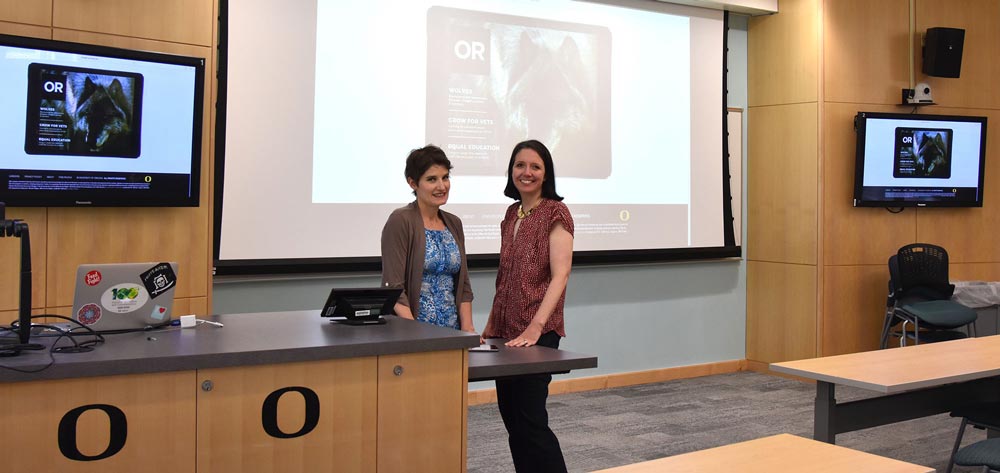Separate Courses Focusing on Content and Production

As one of the first to incorporate solutions journalism into the curriculum, the University of Oregon School of Journalism and Communication is continuously exploring new ways to approach the material. One of the big challenges, identified by veteran solutions journalism educator Kathryn Thier, is the difficulty in teaching both solutions journalism reporting and production at the same time. From the start in 2016, she and Nicole Dahmen employed a two-pronged approach, offering a content-focused solutions course one term and a production course via an existing student-run digital magazine the next. Then they joined forces with investigative journalism professor Brent Walth to offer content-focused Solutions Journalism Reporting II and investigative courses in the fall and winter, followed by two production-focused solutions journalism courses in the spring.
Students who took the solutions journalism reporting course and/or an investigative journalism course in the fall were invited to apply for a spot in one or both of the spring classes. One class produced a solutions-themed, digital edition of OR Magazine. The other, called The Catalyst Project, combined solutions and investigative journalism. Both classes were run like newsrooms. The Catalyst Project is described here.
The Catalyst Project: Investigative Solutions Journalism
The Catalyst Project emphasized both experiential learning for students and academic research for faculty. Standing alone, investigative journalism can sometimes leave citizens unsure about how to respond. Solutions journalism can help bridge that gap through stories that can improve audiences’ feelings of trust in media and self-efficacy about societal problems. By combining the two methods, the project enabled students to learned how journalism can put greater pressure on leaders to solve problems by showing readers that problems are not intractable.
This ten-week class, which met for an hour and 50 minutes twice a week, aimed to identify, describe and analyze the qualities unique to investigative reporting and to solutions journalism and combine them, allowing one to complement, leverage, and strengthen the other. Students learned to use solutions journalism methods and investigative techniques to shine a light on civic and social problems. They pursued ways that solutions journalism can contribute to the public debate about the role of journalism and the journalist in a democratic society, used investigative methods to explain why problems exist, and then held accountable people in authority who could help bring about change. Students combined investigative and solutions methods to develop, report and tell a publication-ready story of civic importance.
IN-CLASS LECTURE AND DISCUSSION
In addition to guest speakers and a few lectures, the class was run mainly as a newsroom. One of the two weekly sessions convened as a news meeting to discuss story progress, challenges and strategies, and in both sessions students teams met with faculty for coaching and editing.
HOMEWORK ASSIGNMENTS
Detailing their progress in weekly reporting memos throughout the semester, students in teams created a work of journalism drawing on investigative reporting and solutions journalism intended for publication.

